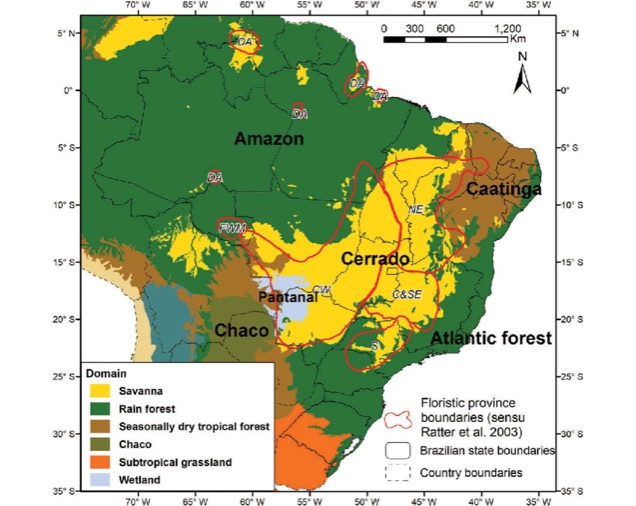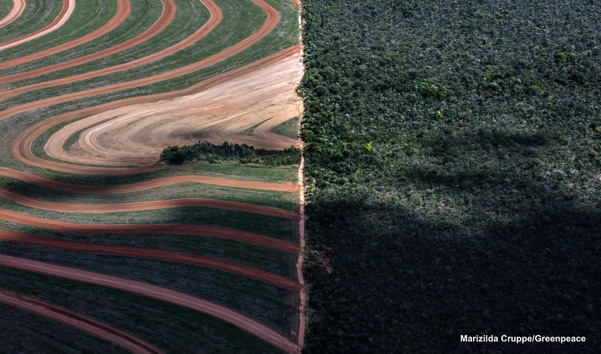News
26 February 2023
The Brazilian “Cerrado”: a textbook case of “modern” agricultural development based on resources grabbing, collusion and violence
Brazil inevitably comes up in any debate on climate change and food systems. Unfortunately, the discussion generally focuses only on the Amazon region where expansion of crop (soja) and cattle (meat) production is the major source of deforestation, where the competition between local people and investors, and between industrial megafarms and family agriculture is often made of violence.
There is, however, another region in Brazil, mostly overlooked, the Cerrado, a savannah area, which has had an even greater importance in the Brazilian agricultural ‘miracle’ that occurred over the last five decades than the Amazon region. It covers around 24% of Brazil surface (more than 200 million hectares). The Cerrado is indeed Brazil’s most important agricultural frontier. It is also a textbook case of how agricultural development is being promoted by the alliance of large multinationals, global finance, national agribusiness and the Brazilian state.
This month’s IDS Bulletin analyses the development of agriculture in the Cerrado and its mechanisms.
Map of the Cerrado

Source: Tavares Azevedo Vieira l. et al., 2019
The success story
Touted by the World Bank as a remarkable success story and showcased as a model of development of commercial agriculture to be replicated in parts of Africa [read], the Cerrado has been a place where Green Revolution recipes have been implemented for decades on a huge scale, with the view of propelling Brazil’s food exports for feeding the world, making of the country one of the largest food exporters (particularly for soya directed to China).
This process took off at the time when the political power in Brazil was in the hands of the military. It has been presented by the Brazilian government as a science- and technology-led endeavour, under the leadership of the Brazilian Agricultural Research Corporation (Embrapa). It has benefitted from huge public support in terms of investment in infrastructure, and massive subsidies.
The costs of success
Marginalization of local population groups
This “success”, write the authors of the introductory paper of the IDS Bulletin, came at a very high cost and at the expense of local communities living in a region that was considered by authorities as being “empty” and “unproductive”. The development of agriculture was concomitant with extreme land concentration in huge industrial megafarms that coexist, within a dual system, with small settlers usually parked in less fertile areas, while local people are excluded and marginalized into poverty, suffering injustice and violence.
Environmental degradation
Massive negative environmental damages arising from the agricultural development process include “deforestation, greenhouse gas emissions, biodiversity loss, land degradation, and depletion of water resources”. Between 2000 and 2018 only, agricultural land grew by more than 10 million hectares (equivalent to one third of France’s total agricultural land), the area initially used for pastures being progressively put under cultivation of grain crops.
By 2018, “the Cerrado accounted for 44.6 per cent of Brazil’s agricultural land area” (approximately 100 million hectares) and the expansion is still ongoing now in a territory totalling more than 73 million hectares - the so-called Matopiba area - in response to greater export opportunities, but also because of gradual soil degradation in those places that had been cleared first. Researchers have shown that, in addition, the region is suffering consequences of climate change, including lower rainfall, that are affecting crop yields [read].
Cerrado: after and before

Source: IDS Bulletin
Violence
The IDS authors emphasize that the expansion of large industrial megafarms has triggered numerous land, water, wood and mineral-related conflicts, creating a “legacy of half a century of violence in the Cerrado” that cannot be ignored. Several other articles in the IDS Bulletin provide evidence of this situation and of the “destructive footprint of an enduring Green Revolution and the battles that have engulfed people and nature in the Cerrado in general and its Matopiba frontier in particular”.
The set-up
The actors
Several articles of the IDS Bulletin show that the development of the Cerrado has followed a logic of extraction and has been implemented through the grabbing of natural resources by Brazilian agribusiness enterprises in partnership with multinationals and global financial groups, with the support of the Brazilian state, all very often in the name of sustainability (!) and frequently with the help of “the illegal appropriation of public land using false or forged ownership documents”.
Diverting regulation
Land and other natural resources appropriated through “green grabbing” based on the use of existing environmental regulation as a smokescreen, are not put in production but kept for speculation in view of future possible exploitation, as has been observed in several parts of the world [read p. 7 and following]. Paradoxically, it is by taking advantage of a regulation that is supposed to protect the environment that “the state has led processes of nature grabbing by using policy and regulatory frameworks to translate the sustainability agenda into actions that suit the interests of capital”. Fires have also been instrumentalized to push the frontier forward [read].
Resisting
This process generated conflicts and lead to the emergence of movements of resistance that have been violently repressed, particularly during the recent Bolsonaro period. This is the current expression of a long tradition of resistance and mobilization against injustice, structured in several movements throughout the country.
Conclusion
The agricultural development of the Cerrado is a striking example of how the food and agriculture sector has been increasingly invaded by agribusiness and finance with the help of governments, at the expense of local population groups.
Hiding behind slogans such as “feeding the world”, “science- and technology-led progress” and now “protecting nature” these private forces are appropriating global natural resources at a great speed and with violence, laying the basis for an undesirable future that looms ahead of us, if we let them continue.
---------------------
Note
-
1.There is evident similarity with the US frontier between the 17th and 19th centuries, a period of “conquest of free land” economic growth and “civilisation”.
————————————-
To know more :
-
•Cabral, L., S. Sauer and A. Shankland, Frontier Territories: Countering the Green Revolution Legacy in the Brazilian Cerrado, IDS Bulletin Vol. 54 No. 1, 2023.
-
•Morris, M.; Binswanger-Mkhize, H.P. and Byerlee, D., Awakening Africa’s Sleeping Giant: Prospects for Commercial Agriculture in the Guinea Savannah Zone and Beyond, World Bank and FAO, 2009.
as well as 7 other articles published in IDS Bulletin Vol.54 No.1, 2023.
Selection of past articles on hungerexplained.org related to the topic:
-
•Science, what science ? A problem or part of the solution? 2023.
-
•Private economic power in food systems and its new forms, 2022.
-
•Opinions: Green Counter-Revolution in Africa? by Jomo Kwame Sundaram, 2020.
-
•Are industrial megafarms the solution for feeding the world? 2018.
-
•Land: an unequally distributed, threatened but essential resource, 2013.
Last update: February 2023
For your comments and reactions: hungerexpl@gmail.com


